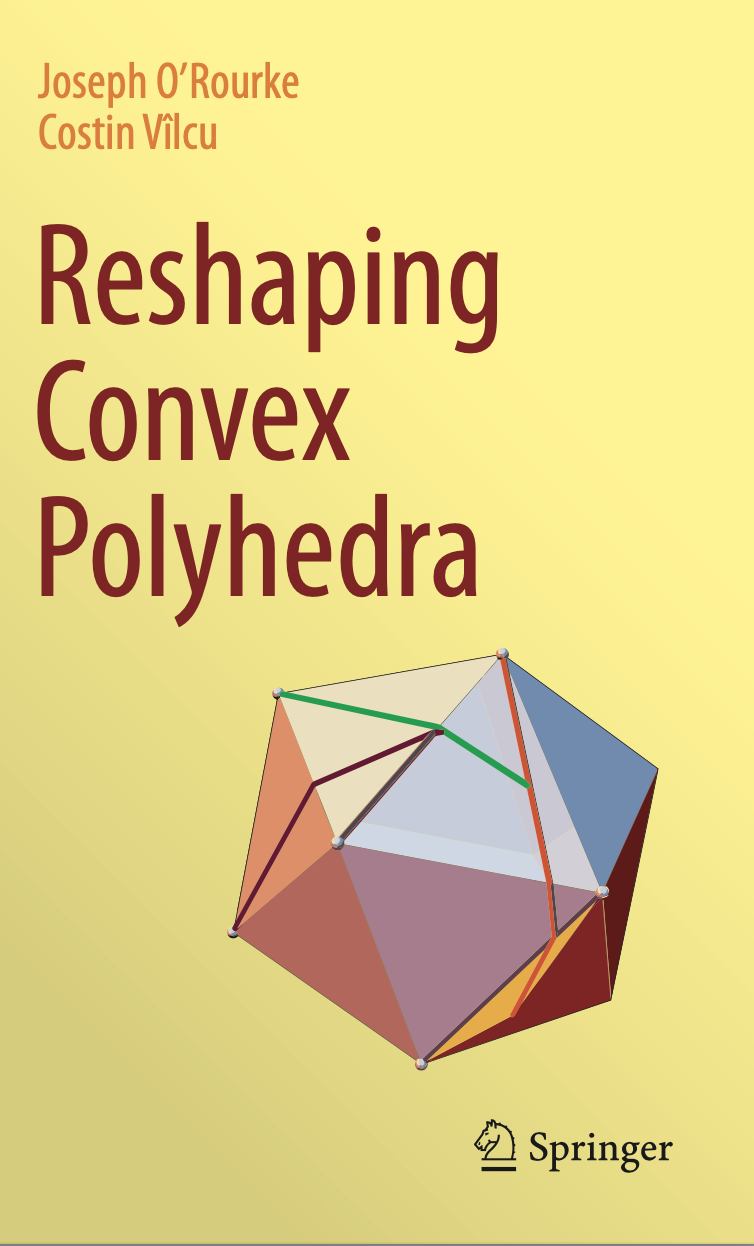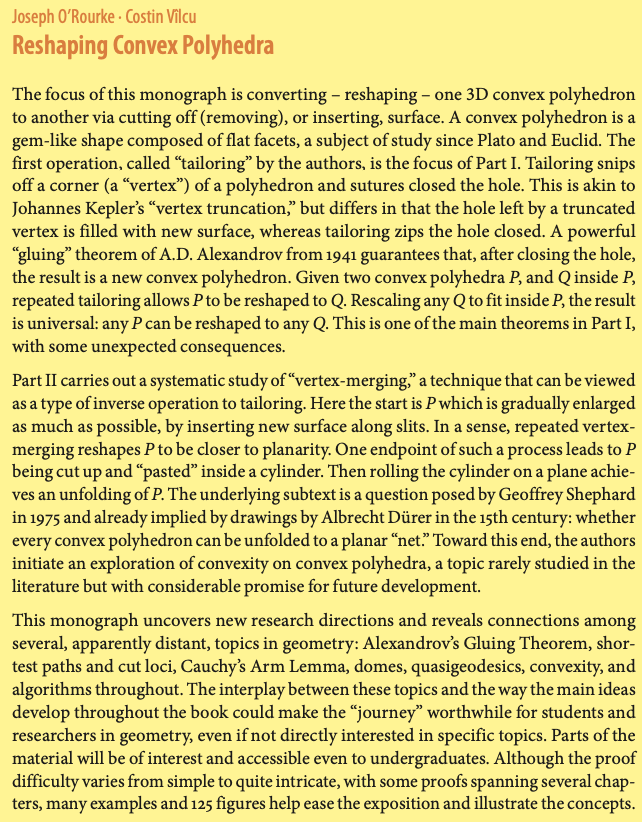
© Joseph O'Rourke & Costin Vîlcu, 2024


Open Problem 18.6. Is there a finite algorithm that determines a continuous unfolding of P onto Q?
A finite algorithm can be achieved by applying two algorithms. The first (suggested by an anonymous referee) collapses a convex polyhedron to a plane, following the straight skeleton of the polyhedron [1]. For Q inside P, let F be a face of Q. Apply the collapsing algorithm to continuously collapse the portion of P above F onto the plane of F. The result is a multilayered shape/region R in that plane, possibly much larger than F enclosed in R (e.g., see Fig.3 in that reference).
The second algorithm folds R to fit into F, so that its "silhouette" equals F. In particular, in [2] (pp.189-191) it is shown that R can be continuously "rolled" into F. The cited argument actually shows this for F a triangle, which was needed for a specific context concerning origami, but it is not difficult to modify the argment for F a convex polygon.
Then the multilayered surface on top of F is conceptually "melded" into F, just as in the argument for Theorem 9.5 (p.104) of Reshaping Convex Polyhedra. The process is repeated for each face of Q, until Q is achieved "by sculpting."
The complexity of this algorithm is unknown, but it is a finite algorithm.
[1] Zachary Abel, Erik D. Demaine, Martin L. Demaine, Jin-ichi Itoh, Anna Lubiw, Chie Nara, Joseph O'Rourke. "Continuously Flattening Polyhedra Using Straight Skeletons." 30th Symposium on Computational Geometry (SoCG) 2014, pp. 396-405.
[2] Erik D. Demaine, Joseph O'Rourke. Geometric Folding Algorithms: Linkages, Origami, Polyhedra. Cambridge University Press. ISBN 978-0-521-85757-4. 2007.
Open Problem 18.15. We conjecture that every convex polyhedron has a simple closed geodesic, or a simple closed quasigeodesic through just one vertex.
It is worth mentioning that Davis et al. proved in [3] that there is no simple geodesic that starts and ends at the same vertex on the cube. But the cube has simple closed geodesics (three combinatorially distinct such geodesics), so this result does not contradict our conjecture.
[3] Davis, Diana, Victor Dods, Cynthia Traub, and Jed Yang. "Geodesics on the regular tetrahedron and the cube." Discrete Mathematics 340, no. 1 (2017): 3183-3196.
Note that we only need a simple closed quasigeodesic through at most two vertices to lead to the any-cut unfolding result via Theorem 16.5.
[4] Ahmed, Syed Ishtiaque, Masud Hasan, and Md Ariful Islam. "Cutting a convex polyhedron out of a sphere." Graphs and Combinatorics 27 (2011): 307-319.
[5] Overmars, Mark H., and Emo Welzl. "The complexity of cutting paper." In Proc. 1st Symposium Computational Geometry, pp. 316-321. 1985.